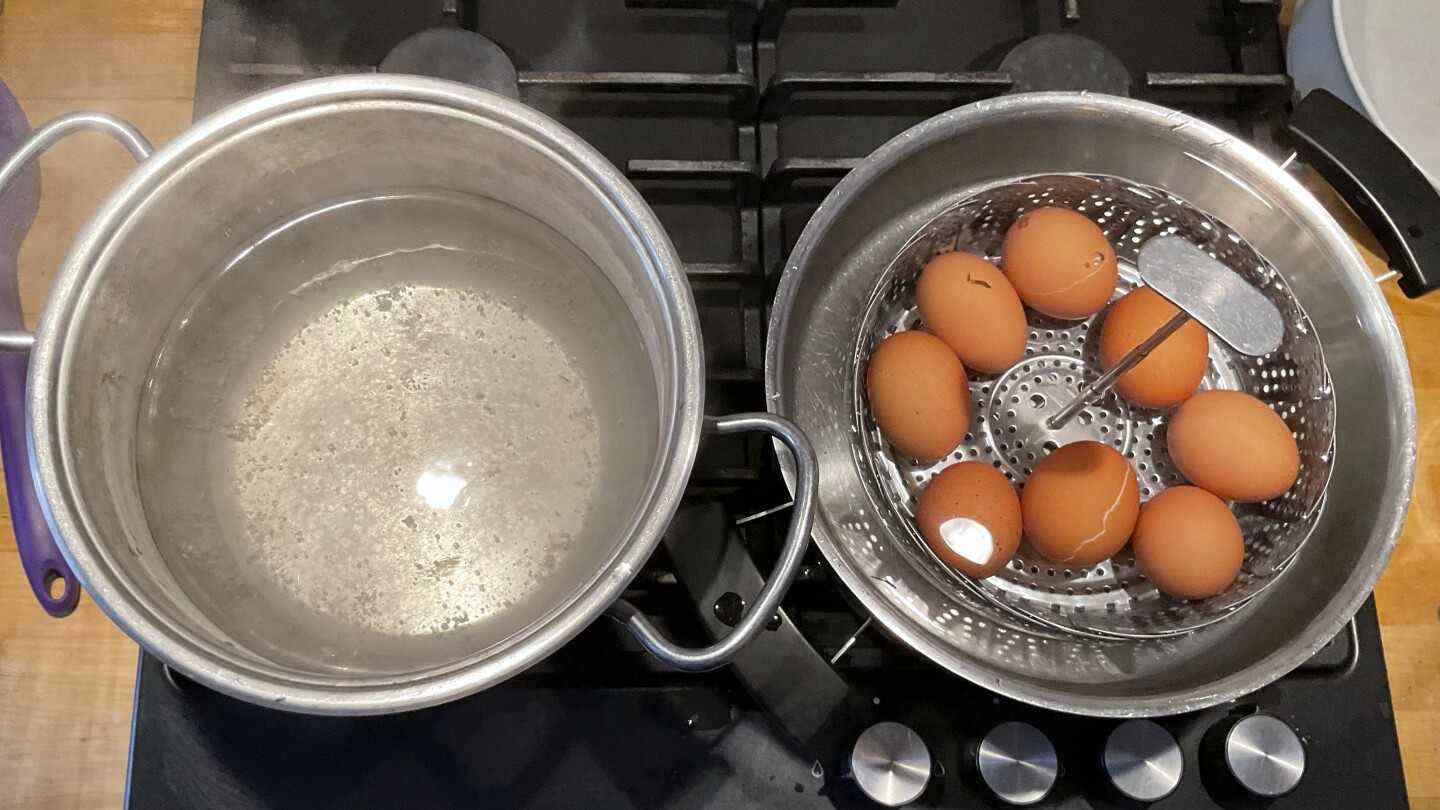Science
How to cook the perfect boiled egg, according to science

Cracking the Code: The Science Behind the Perfect Boiled Egg
For decades, home cooks and chefs alike have grappled with the elusive goal of boiling the perfect egg. The challenge lies in achieving the ideal texture: a velvety, creamy yolk paired with a soft yet fully set white. Now, scientists claim to have cracked this culinary conundrum, offering a precision-driven method that ensures a perfectly cooked egg every time. The breakthrough comes at a time when egg prices in the U.S. are soaring due to a bird flu outbreak, making the prospect of savoring these inexpensive yet satisfying staples even more appealing.
The key to unlocking this culinary mystery lies in understanding how the egg’s components behave under heat. The yolk and white cook at different rates—the yolk at a lower temperature than the white. This discrepancy often leads to overcooked yolks that become chalky or undercooked whites that remain runny. To solve this, researchers conducted extensive experiments, cooking hundreds of eggs and employing mathematical equations to model the heat transfer process between the egg and its surroundings. They also analyzed how the egg’s liquid interior gradually transitions to a solid state, passing through a gel-like intermediate phase. The result is a novel cooking technique dubbed "periodic cooking," which involves a meticulous process of transferring eggs between boiling and lukewarm water to achieve the desired texture.
The Periodic Cooking Method: A Step-by-Step Guide
So, how exactly does this groundbreaking method work? The researchers’ recipe for the perfect boiled egg involves a deliberate sequence of steps that may seem unconventional but promise exceptional results. First, place the eggs in a steamer basket and submerge them in boiling water. After two minutes, transfer them to a separate bowl of lukewarm water maintained at 86°F (30°C). Repeat this process—alternating between boiling and lukewarm water every two minutes—for a total of 32 minutes. Finally, cool the eggs under running water before peeling.
This method ensures that the egg whites are fully set while the yolk remains firm yet creamy, resembling a texture that can almost be spread on bread. According to Emilia Di Lorenzo, a study author from the University of Naples Federico II, the result is nothing short of remarkable. "You could definitely do this at home with half a dozen eggs or so," added Gregory Weiss, a chemist at the University of California, Irvine, who was not involved in the research but praised the method’s accessibility.
Putting the Method to the Test: texture, taste, and expert opinions
To validate their findings, the researchers conducted rigorous testing. They analyzed the chemical composition of eggs cooked using the periodic method and compared them to traditionally boiled eggs. In a blind taste test involving a panel of eight tasters, the eggs prepared using the new technique were consistently praised for their superior texture and flavor. The combination of a creamy yolk and a soft, fully cooked white was described as a game-changer for egg enthusiasts.
Food scientist Joanne Slavin from the University of Minnesota, who had no role in the study, noted that while this method requires more time than traditional boiling, the payoff in terms of texture and taste is well worth the extra effort. "This is a slower process to get a better outcome," Slavin remarked. Her sentiment was echoed by the researchers, who believe their method could elevate the humble boiled egg into a new culinary frontier.
The Perfect Egg: A Culinary Revolution?
While the periodic cooking method may not revolutionize the way we cook altogether, it represents an exciting intersection of science and food. By applying mathematical principles and precise temperature control, the researchers have transformed a simple kitchen task into a miniature science experiment. For home cooks, this means the opportunity to achieve restaurant-quality results with minimal equipment.
In an era where food prices are rising and culinary creativity is more important than ever, this innovation couldn’t come at a better time. Whether you’re a passionate foodie or a busy home cook, the periodic cooking method offers a fresh approach to one of the simplest yet most satisfying foods we know—the boiled egg. With its promise of perfectly balanced textures and flavors, this technique is set to delight palates and inspire culinary experimentation worldwide.











